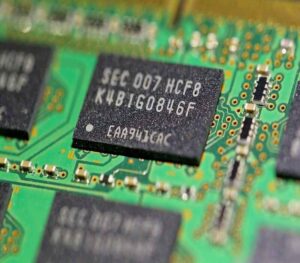Taming the Digital Voice: A Comprehensive Guide on How to Fix Raspy Voice in RVC AI Merging
Introduction: The Quest for Crystal-Clear AI Voices
The universe of simulated intelligence voice transformation has opened up staggering imaginative potential outcomes, permitting us to investigate the subtleties of vocal articulation and make special hear-able encounters. Recovery based Voice Change (RVC) has turned into a well known device for this undertaking. However, a common hurdle in the RVC workflow is dealing with a raspy or distorted output. This article provides a comprehensive guide on how to fix raspy voice RVC AI merging, equipping you with the knowledge and techniques to achieve pristine vocal clarity in your AI-generated voices.
Understanding the Roots of Rasp: Why Does My RVC Voice Sound Like That?
Before diving into solutions, it’s crucial to understand the underlying causes of raspiness in RVC outputs. Rasp is rarely a single issue but rather a symptom of underlying problems in the merging process. Think of it like a complex medical diagnosis – you need to identify the root causes to effectively treat the symptoms. In the context of RVC, these root causes often relate to data quality, voice compatibility, model training, and technical settings.
How to Fix Raspy Voice RVC AI Merging: A Step-by-Step Guide
This section offers a practical, step-by-step approach to how to fix raspy voice RVC AI merging. We will explore each stage of the RVC process, highlighting key areas for optimization:
- Assess the Rasp: Carefully listen to your RVC output. Is the rasp consistent throughout, or does it appear only in certain parts? Identifying the specific characteristics of the rasp will help you narrow down the potential causes.
- Review Your Data: The quality of your training data is paramount. Unfortunate accounts will definitely prompt unfortunate outcomes. Guarantee your source and target voice accounts are spotless, unmistakable, and reliable.
- Analyze Voice Compatibility: Compare the pitch ranges and timbres of your source and target voices. Significant differences can contribute to rasp.
- Assess Preparing Boundaries: Analysis with various preparation settings, including the quantity of ages, group size, and learning rate.
- Adjust RVC Parameters: Tweak the “protect” value and other relevant parameters within your RVC software.
- Check File Handling: Use lossless audio formats and avoid unnecessary compression.
- Implement Pre-processing: Clean and enhance your audio data before training.
- Apply Post-processing: Refine the merged output to reduce any residual rasp.
- Consult the Community: Seek advice from experienced RVC users.
- Iterate and Experiment: The key is to experiment and refine your approach until you achieve the desired results.
Data is Destiny: Optimizing Your Audio for RVC Success
High-quality data is the cornerstone of successful RVC. Trash in, trash out, as is commonly said. Focus on recording in a quiet environment with a good microphone. Minimize background noise and ensure consistent microphone placement. The more clean, high-quality data you have, the better your RVC model will perform.
Matching Voices: Finding Harmony in AI Voice Conversion
Choosing compatible source and target voices is crucial. While you don’t need identical voices, significant differences in pitch range and timbre can create challenges during the merging process, often leading to raspiness. Think of it like trying to blend oil and water – they can be forced together, but the result is rarely smooth.
Training Tweaks: Fine-Tuning Your RVC Model for Clarity
The training process itself can significantly impact the quality of your RVC output. Overtraining can lead to the model memorizing imperfections in the data, while undertraining can result in a lack of nuance and clarity. Experiment with different training parameters to find the sweet spot for your specific voices.
Parameter Play: Mastering the Controls for Smooth Outputs
RVC software offers various adjustable parameters. The “protect” value, in particular, can influence the smoothness of the output. Experimenting with different parameter settings can help you fine-tune the merging process and reduce raspiness.
File Formats and Conversions: The Silent Saboteurs of Clear Audio
Often overlooked, file formats and conversions can introduce subtle distortions that manifest as rasp. Always use lossless formats like WAV for your audio data and avoid unnecessary compression.
Pre-Processing and Post-Processing: Polishing Your AI Voice
Pre-handling your source and target sound can fundamentally work on the nature of your preparation information. Sound decrease, adjustment, and other handling strategies can assist with eliminating undesirable antiques and upgrade clearness. Similarly, post-processing the merged output can help refine the voice and reduce any remaining rasp.
Community Wisdom: Tapping into the Collective Knowledge
The RVC people group is a gold mine of data. Online gatherings, Disagreement servers, and other internet based networks are loaded up with experienced clients who have experienced and conquered comparative difficulties. Go ahead and for help and gain from others’ encounters.
Advanced Techniques: Taking Your RVC Skills to the Next Level
As you become more alright with RVC, you can investigate progressed strategies like information increase, model calibrating, and custom misfortune capabilities to additionally work on the nature of your artificial intelligence voices.
Troubleshooting Specific Rasp Issues in RVC
Sometimes, rasp can manifest in specific ways. For example, it might only appear in certain vocal ranges or during specific phonemes. Identifying these patterns can help you target your troubleshooting efforts and find more specific solutions.
How to Fix Raspy Voice RVC AI Merging: Case Studies and Examples
Real-world examples can be incredibly helpful. Sharing specific case studies of how others have successfully addressed rasp in RVC can provide valuable insights and inspiration.
The Future of AI Voice Conversion and Rasp Reduction
The field of AI voice conversion is constantly evolving. New models, calculations, and methods are being fostered constantly. As innovation progresses, we can hope to see much more modern strategies for lessening scratch and accomplishing unblemished vocal clearness in simulated intelligence produced voices.
Conclusion: Achieving Pristine Vocal Clarity in RVC AI Merging
Accomplishing an unmistakable, regular sounding voice in RVC artificial intelligence blending requires a mix of specialized skill, imaginative reasonableness, and a touch of persistence. By figuring out the reasons for grate and carrying out the arrangements illustrated in this article, you can altogether work on the nature of your computer based intelligence voices and open the maximum capacity of RVC innovation. Keep in mind, the excursion to consummate man-made intelligence voice change is a continuous course of learning, trial and error, and refinement.
Frequently Asked Questions (FAQs)
Q: Why is my RVC voice raspy even with high-quality data?
A: Even with good data, other factors like voice compatibility, training parameters, and file handling can contribute to rasp.
Q: How do I know if my RVC model is overtrained?
A: Overtraining often manifests as a voice that sounds too “perfect” or artificial, with exaggerated nuances and potential raspiness.
Q: What is the “protect” value in RVC, and how does it affect rasp?
A: The “protect” value influences how much the model preserves the characteristics of the source voice. Too high a value can sometimes introduce rasp.
Q: Are there any specific pre-processing techniques that are particularly helpful for reducing rasp?
A: Noise reduction and equalization are often beneficial. Experiment with different pre-processing methods to find what works best for your data.
Q: Where can I find more resources and support for RVC?
A: Online forums, Discord servers, and GitHub repositories are excellent resources for finding RVC communities and support.
Visit our website “Smart Tech Blogger” for more informative articles.







